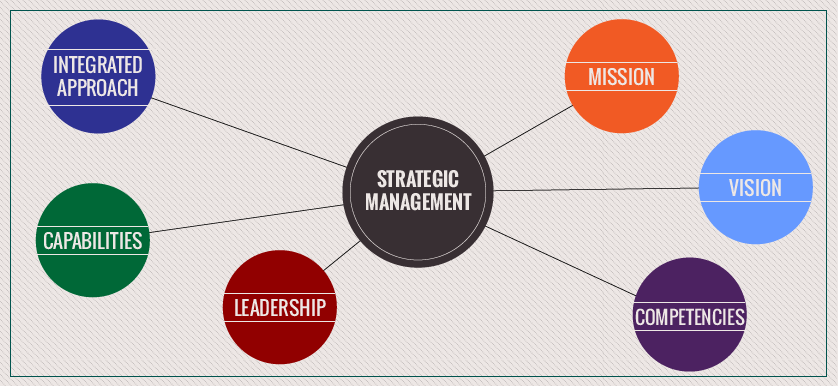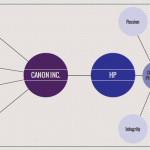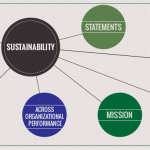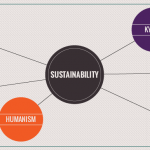Vision statements as strategic management tools – Historical overview
smartKPIs.com Performance Architect update 26/2010
Etymologically, both the words ‘mission‘ and ‘vision‘ have their roots in religion. Most religions, from Taoism, to Christianity and Islam have used the term vision in their religious texts for thousands of years. In these texts, the term “vision” depicts a sacred encounter which results in a view of the future or specific advice on how to approach a situation. Gradually, “vision” has started to be used initially in general and subsequently in business literature, to depict mental images related to the future.
The use of a vision statement in business organizations can be traced far back. As its inherent meaning refers to what organizations want to achieve in the future, it can be argued that any company statement that clarifies this aspect can be considered a vision statement, even if not explicitly labeled this way. In recent history, Sony was one of the first companies reported to have used the vision beyond a simple declaration, to drive organizational development and strategic decision making (Lyons 1976, Morita 1987, Nathan 1999). Another famous early adopter in the late 70s-early 80s was Apple Computer (Swanger and Maidique 1988, Schoemaker 1992). Initial literature on vision statements has associated the concept with leadership, as imagining the future is considered an attribute of a leader (Mendall & Gerguoy 1984, Sashkin 1988, Westley & Mintzberg 1989). One of the earlier definitions of the vision statement in a business context was offered by Kouzes and Posner (1987: 85), who defined it as “an ideal and unique image of the future”.
1990s represent the heyday of vision statements as strategic management tools, with a wave of articles promoting them (Filion 1991, Ziegler 1991, Larwood, Falbe, Kriger & Miesing 1995, Collins & Porras 1991, 1996). This wave of articles was followed by studies analyzing their evolution (O’Brian, Meadows 2001) and impact (Baum JR & Locke EA 1998, Raynor 1998).
Towards the end of 1990, the interest of both researchers and practitioners focused increasingly towards exploring the use of integrated approaches that link strategic management concepts related to corporate identity: mission, vision, values and capabilities or competencies (Raynor 1998, Stuart 1999).
A 2008 survey conducted by the management consulting company Bain & Company ranks Strategic Planning as the second most popular management tool after Benchmarking, while Mission and Vision Statements are on the third place (Rigby and Bilodeau 2009). Of the nearly 10,000 respondents 67% indicated that Strategic Planning and 65% indicated that Mission and Vision Statements are used by their organization. In terms of satisfaction, the same report lists Strategic Planning as the tool which users are most satisfied with (having a rating of 4.01 out of 5), while Mission and Vision Statements (with a rating of 3.91 out of 5) are ranked third. A review of the results of this annual survey conducted since 1993 reveals that the use of Missions and Vision Statements declined from 88% in 1993 to 70% in 2000, followed by an increase to 79% by 2006 and a further decline to 65% in 2008.
Despite the variance in research interest, usage in practice and the confusion with mission statements, vision statements are one of the most important strategic management and business performance management tools. They represent a much needed mental image of the future state, inspiring and motivating leaders and followers towards a common desideratum. In doing this, they facilitate alignment and decision making. While they vary in format and usage, vision statements generally represent a good balance between the efforts invested in development and the impact their usage has on results.
Stay smart! Enjoy smartKPIs.com!
Aurel Brudan
Performance Architect, www.smartKPIs.com
References
- Baum JR & Locke EA (1998) A Longitudinal Study of the Relation of Vision and Vision Communication to Venture Growth in Entrepreneurial Firms, Journal of Applied Psychology, 83(1):43-54.
- Collins JC & Porras JI (1996) Building your Company’s Vision, Harvard Business Review, September-October: 65-77
- Filion LJ (1991) Vision and relations: Elements for an entrepreneurial Metamodel, International Small Business Journal, 9:112-131.
- Kouzes JM & Posner BZ (1987) The leadership challenge: How to get extraordinary things done in organizations, San Francisco, Jossey-Bass.
- Larwood L, Falbe CM, Kriger MP & Miesing P (1995) Structure and meaning of organizational vision. Academy of Management Journal, 38: 740-769.
- Lyons N (1976) The Sony vision, New York, Crown Publishers.
- Mendall JS & Gerguoy HG (1984) Anticipatory management or visionary leadership: A debate, Management Planning, , November-December: 28-31.
- Morita A (1987) Made in Japan: Akio Morita and Sony, London, Fontana Paperbacks.
- Nathan J (1999) Sony: The private life, London, Haper Collins Business.
- O’Brian F & Meadows M (2001) How To Develop Visions: A Literature Review and a Revised CHOICES Approach for an Uncertain World, Journal of Systemic Practice and Action Research, 14(4):495-515.
- Raynor ME (1998) That Vision Thing: Do We Need It?, Long Range Planning, 31(3):368-376
- Rigby and Bilodeau 2009, Management Tools and Trends 2009, a Bain and Company, Inc.
- Sashkin M (1988). The visionary leader, Charismatic leadership: The elusive factor in organizational effectiveness, In J. A. Conger & R. N. Kanungo (Eds.), pp. 122-160), Jossey-Bass, San Francisco.
- Schoemaker PJH (1992) How to Link Strategic Vision to Core Capabilities, Sloan Management Review, Fall: 67-81.
- Swanger CC, Maidique MA (1988) Apple Computer: The First Ten Years, Strategic Management of Technology and Innovation, Homewood, Illinois, Irwin, pp. 288-320.
- Stuart H (1999) A definitive model of the corporate identity management process, Corporate Communications: An International Journal, 4(4):200-207.
- Westley R & Mintzberg H (1989) Visionary leadership and strategic management, Strategic Management Journal, 10:17-32.
- Ziegler W (1991) Envisioning the Future, Futures, June: 516-527.
Walker, Rob 1992,“Rank Xerox – Management Revolution”, Long Range Planning, Vol. 25, No. 1, pp. 9 to 21

Tags: Aurel Brudan, Performance Architect Update, Tools, Vision Statements






